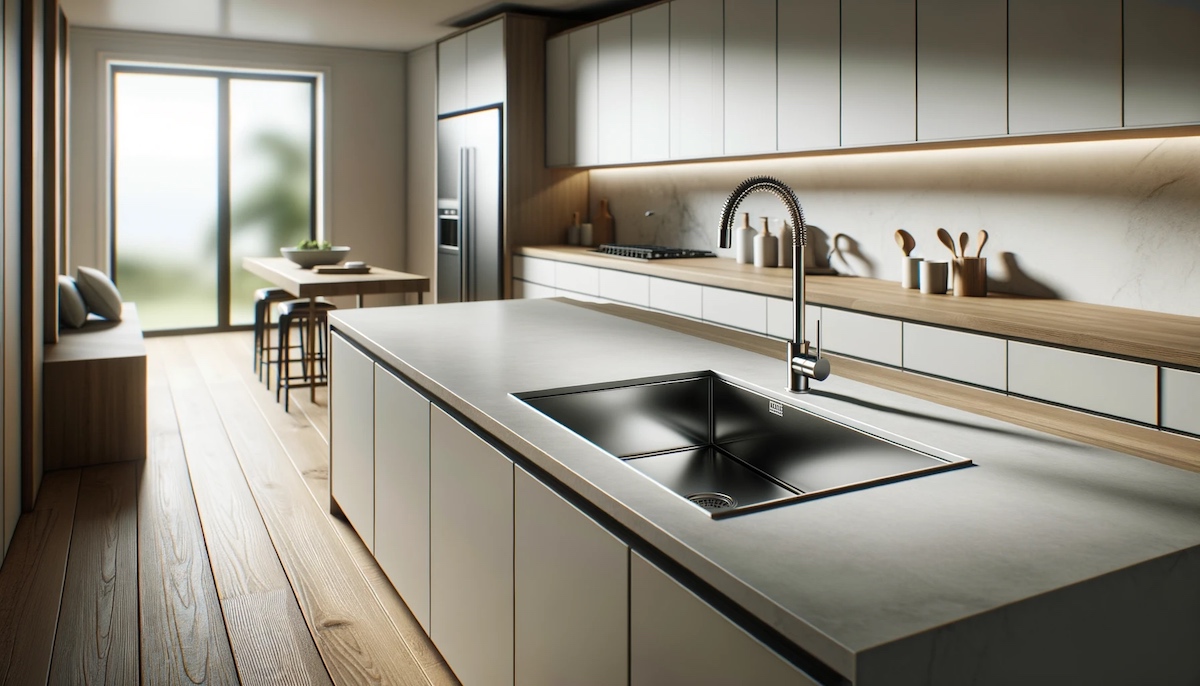

Articles
What Is Flush Mount Sink
Modified: October 28, 2024
Discover the benefits and installation process of flush mount sinks in our comprehensive articles series. Upgrade your kitchen with this sleek and functional design today.
(Many of the links in this article redirect to a specific reviewed product. Your purchase of these products through affiliate links helps to generate commission for Storables.com, at no extra cost. Learn more)
Introduction
Welcome to the world of kitchen sinks! If you’re considering upgrading your kitchen or simply looking for a new sink, you’ve probably come across the term “flush mount sink.” But what exactly is a flush mount sink and why should you consider it?
A flush mount sink, also known as an undermount sink or seamless sink, is a style of sink that is installed underneath the countertop, creating a smooth and seamless appearance. Unlike a traditional top-mount sink, which sits on top of the counter with its edges exposed, a flush mount sink is mounted from beneath, allowing for a clean and sleek look.
Flush mount sinks have gained popularity in recent years due to their modern and minimalist aesthetic. They seamlessly blend into the countertop, creating a cohesive and streamlined design that complements any kitchen style. Whether you have a traditional or contemporary kitchen, a flush mount sink can be the perfect addition to enhance the overall look and functionality of your space.
The main advantage of a flush mount sink is its clean and seamless appearance. Without the raised edges of a top-mount sink, cleaning becomes a breeze as there are no crevices where dirt and grime can accumulate. You can simply wipe any mess directly into the sink without worrying about debris getting caught on the edges. This makes maintaining the cleanliness of your kitchen sink much easier and more hygienic.
Another advantage of a flush mount sink is the extra counter space it provides. With the sink mounted beneath the countertop, there are no obstacles or raised edges to disrupt the flow of the countertop surface. This gives you more usable space for food preparation, cooking, and other kitchen tasks. It also makes it easier to sweep crumbs and spills directly into the sink, further minimizing the need for countertop cleanup.
While flush mount sinks offer many advantages, it’s important to consider their limitations as well. One of the main disadvantages is the complexity of installation. Unlike a top-mount sink that can be simply dropped into a cutout on the countertop, a flush mount sink requires precise measurements, careful preparation, and professional installation. It’s essential to ensure that the sink is properly aligned and securely attached to the underside of the countertop for optimal functionality and durability.
Another consideration is the type of material used for the countertop. Some materials, such as laminate or solid surface, may not be suitable for flush mount sinks due to their vulnerability to water damage. It’s important to consult with a professional to determine the compatibility of your countertop material before choosing a flush mount sink.
Now that you have a better understanding of what a flush mount sink is and its advantages and disadvantages, you can make an informed decision when selecting a sink for your kitchen. In the next sections, we’ll explore the popular materials used for flush mount sinks, how to install them, and maintenance tips to ensure their longevity.
Key Takeaways:
- Flush mount sinks offer a sleek and seamless appearance, easy cleaning, maximized counter space, enhanced aesthetics, and durability. Consider size, material, bowl configuration, style, installation compatibility, and budget when choosing one for your kitchen.
- Proper maintenance, such as regular cleaning, avoiding abrasive materials, and periodic inspection, is crucial for preserving the longevity and beauty of flush mount sinks. Consult with professionals for installation and decision-making to ensure a successful and informed choice.
Read more: What Are Flush Mount Lights
Definition of Flush Mount Sink
A flush mount sink, also known as an undermount sink or seamless sink, is a style of sink that is installed beneath the countertop. Unlike a top-mount sink that rests on top of the counter with its edges overlapping the countertop surface, a flush mount sink is mounted from underneath, creating a seamless integration with the countertop.
Flush mount sinks are primarily used in kitchens, but they can also be found in bathrooms and utility rooms. They are available in various shapes and sizes to accommodate different kitchen designs and personal preferences.
The installation process of a flush mount sink is more complex compared to a top-mount sink. First, the countertop needs to be custom-cut to allow the sink to fit snugly into the prepared opening. The sink is then securely attached to the underside of the countertop using clips, brackets, or adhesive. This method of installation ensures a clean and seamless appearance with no visible edges or gaps between the sink and countertop.
One of the distinct features of a flush mount sink is its sleek and streamlined look. Without the raised edges that top-mount sinks typically have, a flush mount sink creates a continuous surface from the countertop to the sink basin. This minimalist design adds a touch of elegance and sophistication to any kitchen aesthetic.
Flush mount sinks are commonly made from durable materials such as stainless steel, porcelain, composite granite, or fireclay. The choice of material depends on personal preference, budget, and desired aesthetic. Each material has its own unique characteristics and benefits, including resistance to stains, scratches, and heat, as well as ease of maintenance.
In terms of functionality, a flush mount sink offers several advantages. The absence of raised edges makes it easier to sweep crumbs, spilled liquids, and food scraps directly into the sink without any obstruction. Cleaning the sink is also simplified, as there are no crevices or edges where dirt and grime can accumulate.
While a flush mount sink is an aesthetically pleasing and practical choice for many homeowners, it’s essential to consider the compatibility with your countertop material and the complexity of installation. Consulting with a professional is recommended to ensure a seamless integration and optimal functionality of your flush mount sink.
In the next sections, we will explore the advantages and disadvantages of flush mount sinks, popular materials used for their construction, installation procedures, maintenance tips, and factors to consider when choosing the right flush mount sink for your kitchen.
Advantages of Flush Mount Sink
Flush mount sinks offer several advantages that make them a popular choice among homeowners. Let’s take a closer look at some of the key benefits:
- Sleek and seamless appearance: One of the major advantages of flush mount sinks is their clean and seamless look. The sink is mounted beneath the countertop, creating a smooth and uninterrupted surface. This minimalist design adds a touch of elegance and sophistication to any kitchen decor. It also allows the countertop to be the focal point, without any interruptions from raised sink edges.
- Easier cleaning: Flush mount sinks are much easier to clean compared to top-mount sinks. With no raised edges, there are no crevices for dirt and grime to accumulate. You can simply wipe spills and debris directly into the sink without any obstructions. This not only saves time and effort but also ensures a more hygienic kitchen workspace.
- Maximized counter space: Another advantage of flush mount sinks is that they maximize the usable counter space. With the sink installed beneath the countertop, there are no barriers or edges that restrict your workspace. You can have a continuous and uninterrupted surface for food preparation, cooking, and other kitchen activities. This extra space can be particularly beneficial in smaller kitchens where every inch counts.
- Enhanced aesthetics: Flush mount sinks offer a sleek and contemporary appearance that complements various kitchen styles. They create a seamless integration with the countertop, allowing other design elements, such as backsplashes and cabinetry, to stand out. Whether you have a modern, traditional, or transitional kitchen, a flush mount sink can enhance the overall aesthetics and create a cohesive look.
- Durable and long-lasting: Flush mount sinks are typically made from durable materials such as stainless steel, porcelain, composite granite, or fireclay. These materials are known for their strength, resistance to stains, scratches, and heat. They can withstand the demands of daily use and maintain their functionality and beauty for years to come.
- Versatility in design: Flush mount sinks come in a variety of shapes, sizes, and materials, offering versatility in design options. Whether you prefer a single bowl or double bowl sink, a deep or shallow basin, or a specific material finish, you can find a flush mount sink that fits your style and functional requirements.
Overall, flush mount sinks provide a combination of aesthetics, functionality, and ease of maintenance. Their seamless integration with the countertop adds a touch of elegance to any kitchen while maximizing the usable space. If you’re looking to upgrade your kitchen design and simplify your cleaning routine, a flush mount sink may be the perfect option for you.
Disadvantages of Flush Mount Sink
While flush mount sinks have many advantages, it’s important to consider the potential disadvantages before making a decision. Here are some of the main drawbacks to keep in mind:
- Complex installation: Installing a flush mount sink can be more complicated compared to a top-mount sink. It requires precise measurements, careful preparation of the countertop, and professional installation. The sink needs to be securely attached to the underside of the countertop to ensure stability and prevent any future issues. This complexity may require hiring a professional, which adds to the overall cost of the sink installation.
- Compatibility with countertop materials: Not all countertop materials are suitable for flush mount sinks. Some materials, such as laminate or solid surface, may not be strong or water-resistant enough to support the weight and potential moisture exposure of an undermount sink. It’s important to consult with a professional to ensure that your chosen countertop material is compatible with a flush mount sink before making a purchase.
- Potential for water damage: If the installation of a flush mount sink is not done correctly, it can lead to water damage. If the sink is not securely attached or if there are gaps between the sink and the countertop, water can seep into these areas and cause damage over time. It’s crucial to have the sink properly installed and regularly inspect for any signs of leakage or damage.
- Higher cost: Flush mount sinks tend to be more expensive compared to top-mount sinks. The complexity of installation, the need for professional assistance, and the additional materials required for securing the sink contribute to the higher cost. If you’re on a tight budget, a flush mount sink may not be the most economical option.
- Limited retrofitting options: If you’re considering replacing an existing sink with a flush mount sink, you may face limitations due to the difference in installation methods. Since the undermount sink is installed from beneath, it may not be possible to retrofit it into an existing countertop that was originally designed for a top-mount sink. This can add to the cost and complexity of the project if you need to replace the entire countertop as well.
Considering these disadvantages will help you make an informed decision about whether a flush mount sink is the right choice for your kitchen. It’s important to weigh the pros and cons and assess your specific needs and budget before proceeding with the installation.
Next, we will explore the popular materials used for flush mount sinks, provide tips on how to install them, and offer maintenance advice to ensure the longevity and functionality of your sink.
Popular Materials for Flush Mount Sinks
Flush mount sinks come in a variety of materials, each with its own unique characteristics and benefits. The choice of material for your flush mount sink not only affects its durability and functionality but also contributes to the overall aesthetic of your kitchen. Here are some popular materials used for flush mount sinks:
- Stainless Steel: Stainless steel is a favored material for kitchen sinks due to its durability, resistance to stains, and easy maintenance. It has a sleek and modern look that complements a wide range of kitchen styles. Stainless steel sinks are also highly resistant to heat and can withstand heavy daily use. They offer a hygienic and non-porous surface that prevents bacteria growth and makes cleaning a breeze.
- Porcelain: Porcelain sinks are known for their classic and timeless appeal. They come in various shades, such as white and ivory, that add elegance and charm to any kitchen. Porcelain sinks are highly resistant to stains and scratches, making them a practical choice for busy kitchens. However, they can be more susceptible to chipping and cracking if heavy objects are dropped into the sink.
- Composite Granite: Composite granite sinks are made from a blend of granite stone and resin, resulting in a durable and visually appealing sink. They offer the natural beauty of granite with added functionality. Composite granite sinks are resistant to chipping, scratching, and heat, providing long-lasting performance. They are available in a variety of colors, allowing you to match them with your countertop and kitchen decor.
- Fireclay: Fireclay sinks are crafted from a combination of clay and glaze, which are then fired at high temperatures. This process produces a sink that is extremely durable and resistant to scratches, stains, and fading. Fireclay sinks have a smooth and glossy finish that adds a touch of sophistication to any kitchen design. They are available in a range of colors and styles to suit different preferences.
- Composite Quartz: Composite quartz sinks are engineered from a blend of quartz and resin, creating a sink that is resistant to stains, scratches, and heat. They offer a luxurious and contemporary aesthetic with a smooth and non-porous surface. Composite quartz sinks are available in various colors and finishes and can seamlessly blend with different kitchen styles.
When selecting the material for your flush mount sink, consider your lifestyle, budget, and overall kitchen design. Each material has its own pros and cons, so it’s important to choose one that best fits your needs and preferences.
Additionally, it’s advisable to consult with a professional or a knowledgeable salesperson to understand the specific maintenance requirements of the chosen material. Proper care and maintenance will ensure the longevity and beauty of your flush mount sink.
In the following sections, we will explore the installation process for flush mount sinks, provide maintenance tips, and help you choose the right flush mount sink for your kitchen.
A flush mount sink is a type of sink that is installed to be level with the surrounding countertop, creating a seamless and modern look. It is a great option for contemporary kitchen and bathroom designs.
Read more: What Is Flush Mount Album
How to Install a Flush Mount Sink
Installing a flush mount sink requires precision and careful attention to detail to ensure a seamless and stable integration with your countertop. While it is recommended to hire a professional for the installation, here is a general guide on how to install a flush mount sink:
- Prepare the countertop: Measure and cut an opening in your countertop that matches the dimensions of the sink. The opening should be slightly smaller than the sink to ensure a snug fit. Take into account any additional accessories or features, such as a faucet or soap dispenser, that will also need to be installed.
- Read the manufacturer’s instructions: Before proceeding with the installation, carefully read and follow the manufacturer’s instructions that accompany your flush mount sink. This will provide specific guidance for your particular sink model and ensure a successful installation.
- Apply a sealant: Apply a layer of silicone sealant around the edges of the sink opening on the underside of the countertop. This will help create a watertight seal and prevent any moisture from seeping into the cabinet or countertop.
- Position the sink: Carefully lower the sink into the prepared opening, ensuring that it fits securely and evenly. Make sure that the sink is aligned with the countertop and that no gaps or uneven surfaces are visible. Apply gentle pressure to set the sink in place.
- Secure the sink: Depending on the sink model, attach brackets or clips to the underside of the countertop to secure the sink in place. These brackets or clips are typically provided with the sink or can be purchased separately. Follow the manufacturer’s instructions on how to properly attach and secure the sink.
- Connect plumbing: Once the sink is securely installed, connect the plumbing components, including the drain and supply lines, according to the manufacturer’s instructions. If you are unsure or uncomfortable with this step, it is recommended to hire a professional plumber to ensure proper installation and prevent any leaks or plumbing issues.
- Clean and test: After the installation is complete, thoroughly clean the sink and countertop to remove any debris or sealant residue. Test the sink by running water and checking for any leaks or drainage issues. Make any necessary adjustments or repairs as needed.
It’s important to note that the installation process may vary depending on the specific sink model and countertop material. It’s always a good idea to consult with a professional or follow the instructions provided by the sink manufacturer to ensure a successful installation.
Proper installation of a flush mount sink is essential to ensure its stability, functionality, and longevity. Hiring a professional can help eliminate any potential complications and provide you with peace of mind that the installation is done correctly.
In the following sections, we will discuss maintenance tips for flush mount sinks and provide guidance on choosing the right flush mount sink for your kitchen.
Maintenance Tips for Flush Mount Sinks
Proper maintenance of your flush mount sink is essential to keep it looking clean, functioning optimally, and prolong its lifespan. Here are some maintenance tips to help you keep your sink in top condition:
- Regular cleaning: Clean your sink regularly using mild soap or a non-abrasive cleaner. Avoid using harsh chemicals or abrasive scrubbing pads, as they can scratch or damage the sink’s surface. After cleaning, thoroughly rinse the sink with water and dry it with a soft cloth to prevent water spots.
- Prevent staining: Certain substances, such as coffee, tea, red wine, or acidic foods, can cause stains on your sink if left for extended periods. Promptly clean up any spills or stains to avoid discoloration. For stubborn stains, you can use a mixture of baking soda and water or a mild abrasive cleaner recommended for your specific sink material. Always follow the manufacturer’s guidelines to avoid damaging the surface.
- Avoid abrasive materials: When cleaning your sink, avoid using abrasive materials like steel wool or scouring pads, as they can scratch or dull the sink’s finish. Instead, opt for a soft sponge or cloth to gently clean the surface. If you need to remove any stubborn debris, use a non-scratch scrub brush or a soft-bristle brush.
- Protection from heat: To prevent damage, avoid placing hot pots, pans, or cookware directly onto the sink surface. The high temperatures can potentially cause discoloration or thermal shock. Instead, use a trivet or heat-resistant pad to protect the sink from extreme heat.
- Avoid heavy impact: Be cautious when handling heavy objects or utensils in your sink, as they can cause dents or chips in the sink surface. Take care when washing or stacking heavy pots and pans to minimize the risk of accidental damage.
- Prevent mineral buildup: If you live in an area with hard water, mineral deposits can build up on your sink over time. To prevent this, wipe the sink dry after each use to minimize water spots and mineral buildup. If deposits do occur, you can use a mixture of equal parts water and vinegar to gently remove them. Rinse the sink thoroughly afterwards and dry it completely.
- Regular inspection: Periodically inspect your sink for any signs of damage, leaks, or loose attachments. If you notice any issues, address them promptly to prevent further damage or water damage to the surrounding countertop and cabinets. Consult with a professional if you’re uncertain how to fix or address any issues.
Following these maintenance tips will help ensure that your flush mount sink remains in excellent condition and retains its aesthetic appeal for years to come. Additionally, refer to the manufacturer’s guidelines and specific care instructions for your sink material to ensure proper maintenance practices.
In the next section, we will discuss important factors to consider when choosing the right flush mount sink for your kitchen.
Choosing the Right Flush Mount Sink for Your Kitchen
Choosing the right flush mount sink for your kitchen involves considering various factors, including size, style, material, and functionality. Here are some important considerations to help you make an informed decision:
- Sink size: Determine the appropriate size of the sink based on the dimensions of your countertop and the available space in your kitchen. Consider the depth and width of the sink to accommodate your daily tasks and cooking needs. Keep in mind that a deeper sink can provide more versatility, while a wider sink offers more workspace.
- Material: Consider the material of the sink that best suits your needs and preferences. Popular options include stainless steel, porcelain, composite granite, fireclay, and composite quartz. Each material has its own benefits in terms of durability, resistance to stains and scratches, and aesthetic appeal. Take into account the overall style and color palette of your kitchen for a cohesive look.
- Bowl configuration: Determine whether you prefer a single bowl or a double bowl sink. A single bowl sink offers more space for larger items and is easier to clean, while a double bowl sink provides the flexibility to separate tasks, such as washing dishes and preparing food, simultaneously. Consider your specific kitchen needs and preferences when choosing the bowl configuration.
- Style and aesthetics: Consider the style and aesthetics of your kitchen when selecting a flush mount sink. Look for a sink that complements the overall design and matches your personal taste. Whether you prefer a sleek and modern appearance or a more traditional and timeless look, choose a sink that enhances the overall aesthetics of your kitchen space.
- Installation compatibility: Ensure that the sink you choose is compatible with the type of countertop material in your kitchen. Different sink materials may require specific installation methods and support structures. Consult with a professional or sink manufacturer to confirm the compatibility and installation requirements of your chosen sink.
- Budget: Determine your budget for the flush mount sink, including the cost of installation and any additional accessories or plumbing components required. Set a realistic budget that aligns with the quality, durability, and aesthetic appeal you desire. It’s important to strike a balance between cost and the long-term value and functionality of the sink.
Additionally, read consumer reviews and seek recommendations from professionals or friends who have experience with flush mount sinks. They can provide valuable insights and help you make an informed decision.
By considering these factors, you can choose a flush mount sink that fits your kitchen layout, matches your style preferences, and meets your functional requirements.
To wrap up, flush mount sinks offer a seamless and sleek design, making them a popular choice for modern kitchens. By properly maintaining your flush mount sink and following the manufacturer’s guidelines, you can enjoy its functionality and aesthetic appeal for many years to come.
If you’re unsure about installation or have specific requirements, it’s always recommended to consult with a professional to ensure a successful installation and optimal performance of your flush mount sink.
Conclusion
Flush mount sinks, with their sleek and seamless design, provide both aesthetic appeal and functional benefits for your kitchen. By installing a flush mount sink, you can create a clean and contemporary look that enhances the overall aesthetic of your kitchen space. The advantages of a flush mount sink include its seamless appearance, easy cleaning, maximized counter space, enhanced aesthetics, and durability.
While there are some disadvantages to consider, such as the complexity of installation and potential limitations with countertop materials, the benefits of a flush mount sink outweigh the drawbacks for many homeowners. It’s important to carefully consider these factors and consult with professionals, if needed, to ensure a successful installation and compatibility with your kitchen setup.
When choosing a flush mount sink, consider the size, material, bowl configuration, style, installation compatibility, and your budget. Each decision should align with your specific needs, preferences, and the overall design of your kitchen. By taking these factors into account, you can select a flush mount sink that offers both practicality and visual appeal.
To maintain the longevity and beauty of your flush mount sink, follow proper maintenance practices, such as regular cleaning and avoiding abrasive materials. Additionally, periodically inspect your sink for any signs of damage or leaks, and address them promptly to prevent further issues.
Ultimately, a well-chosen and properly maintained flush mount sink can elevate the functionality and aesthetics of your kitchen. Whether you’re renovating your kitchen or simply upgrading your sink, a flush mount sink can be a worthy investment that enhances your cooking experience and adds value to your home.
Remember, it’s always advisable to consult with professionals or seek expert advice when installing or making decisions about your flush mount sink. Their expertise can ensure a smooth installation process and help you make informed choices.
Now that you’re equipped with knowledge about flush mount sinks, their advantages, disadvantages, materials, installation, and maintenance, you can confidently choose the right flush mount sink for your kitchen and enjoy the benefits it brings.
Frequently Asked Questions about What Is Flush Mount Sink
Was this page helpful?
At Storables.com, we guarantee accurate and reliable information. Our content, validated by Expert Board Contributors, is crafted following stringent Editorial Policies. We're committed to providing you with well-researched, expert-backed insights for all your informational needs.

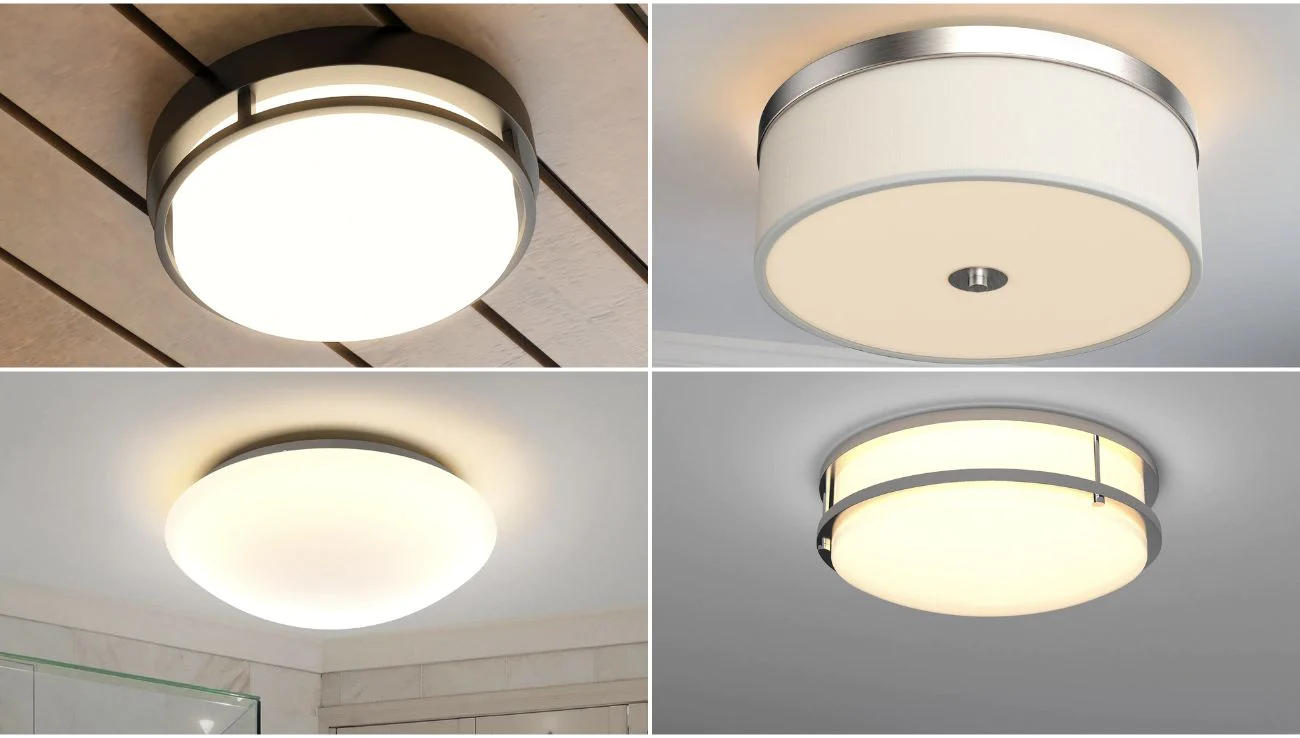

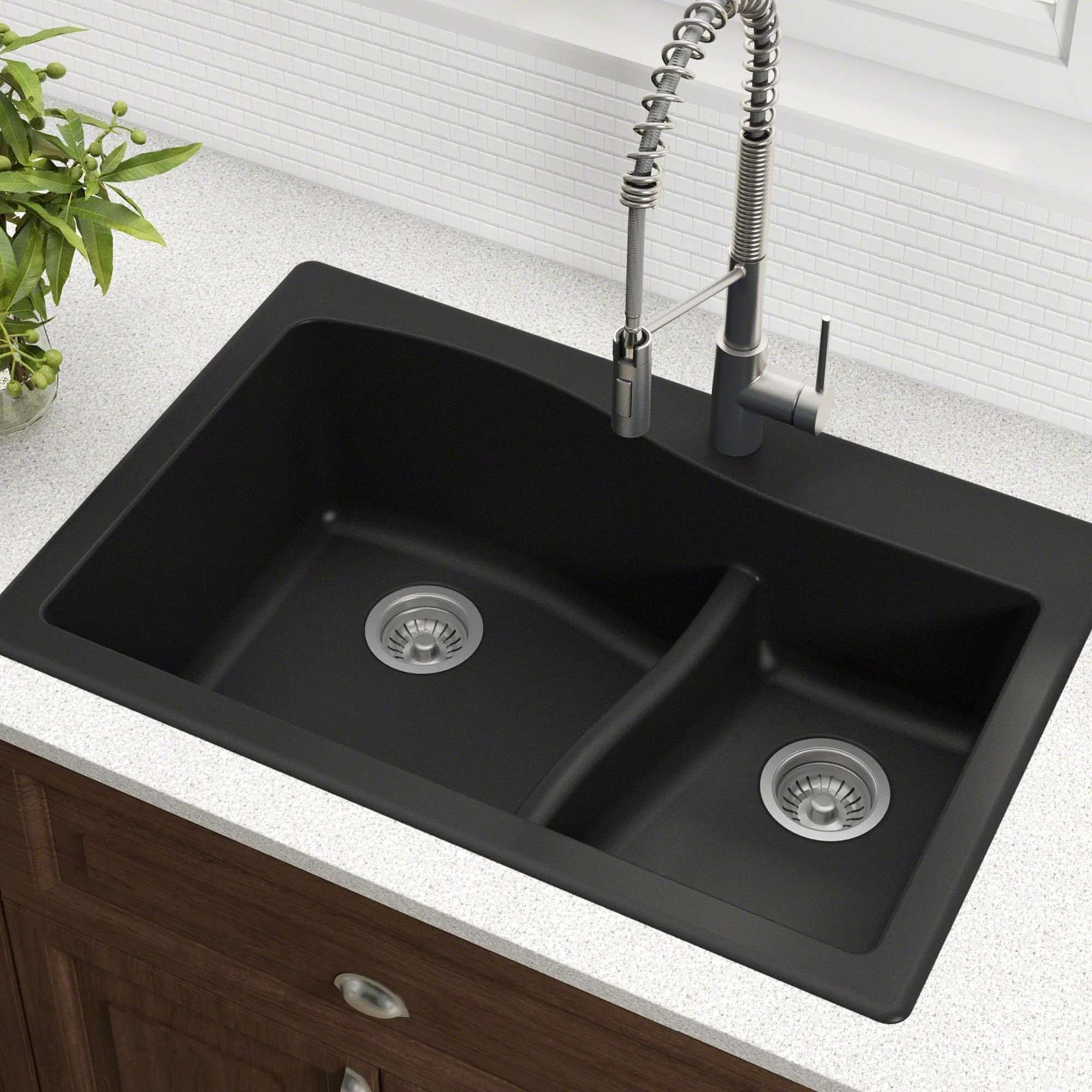




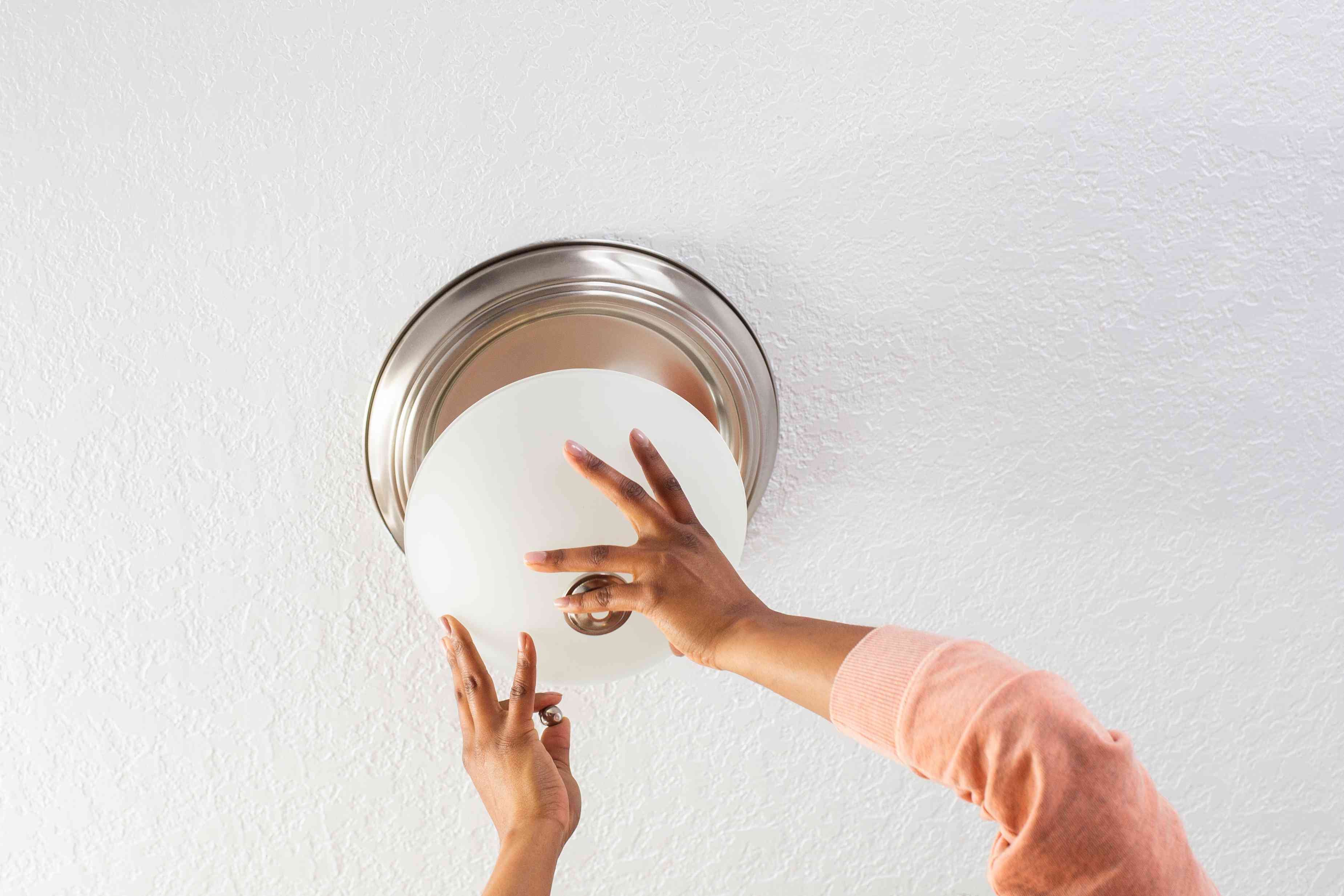

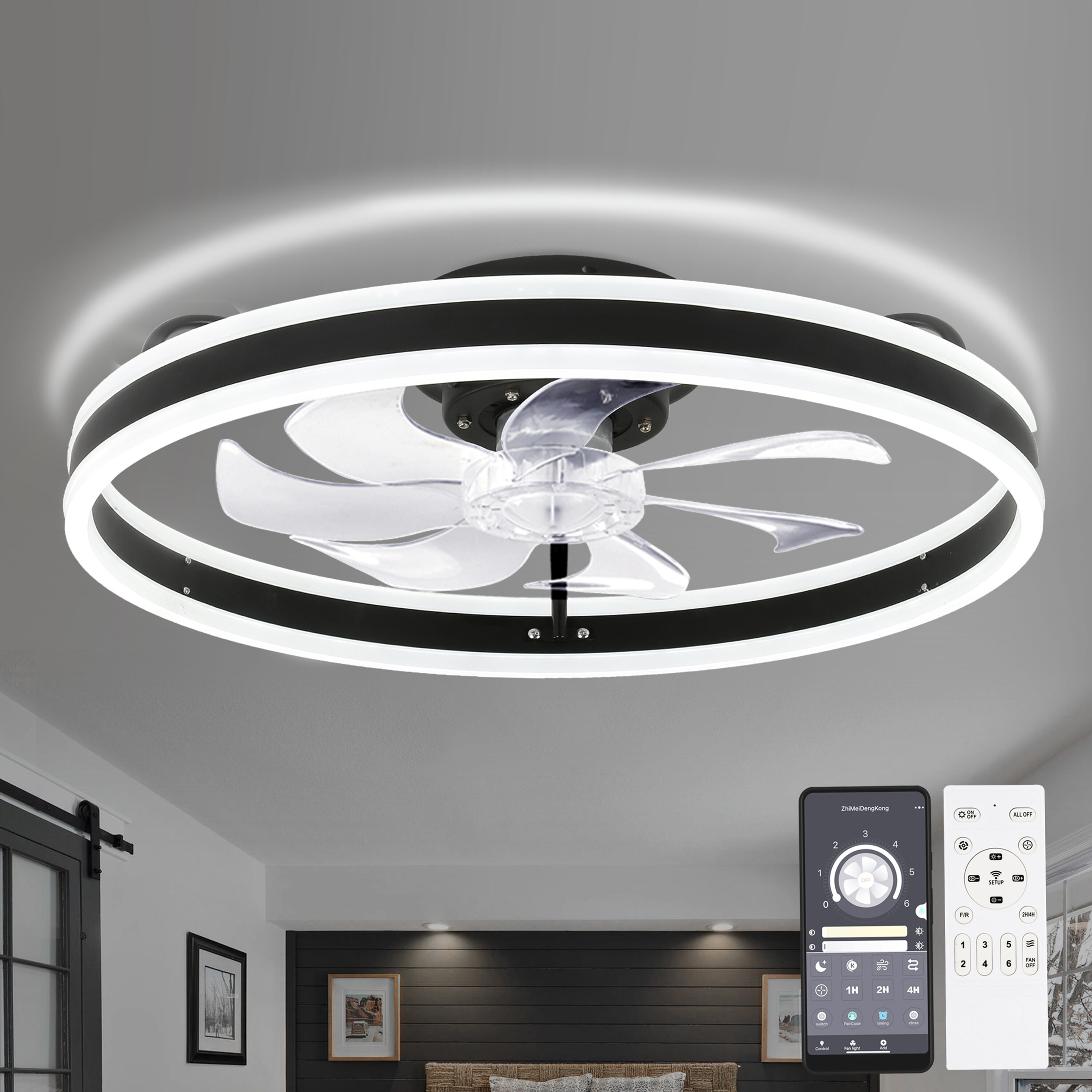

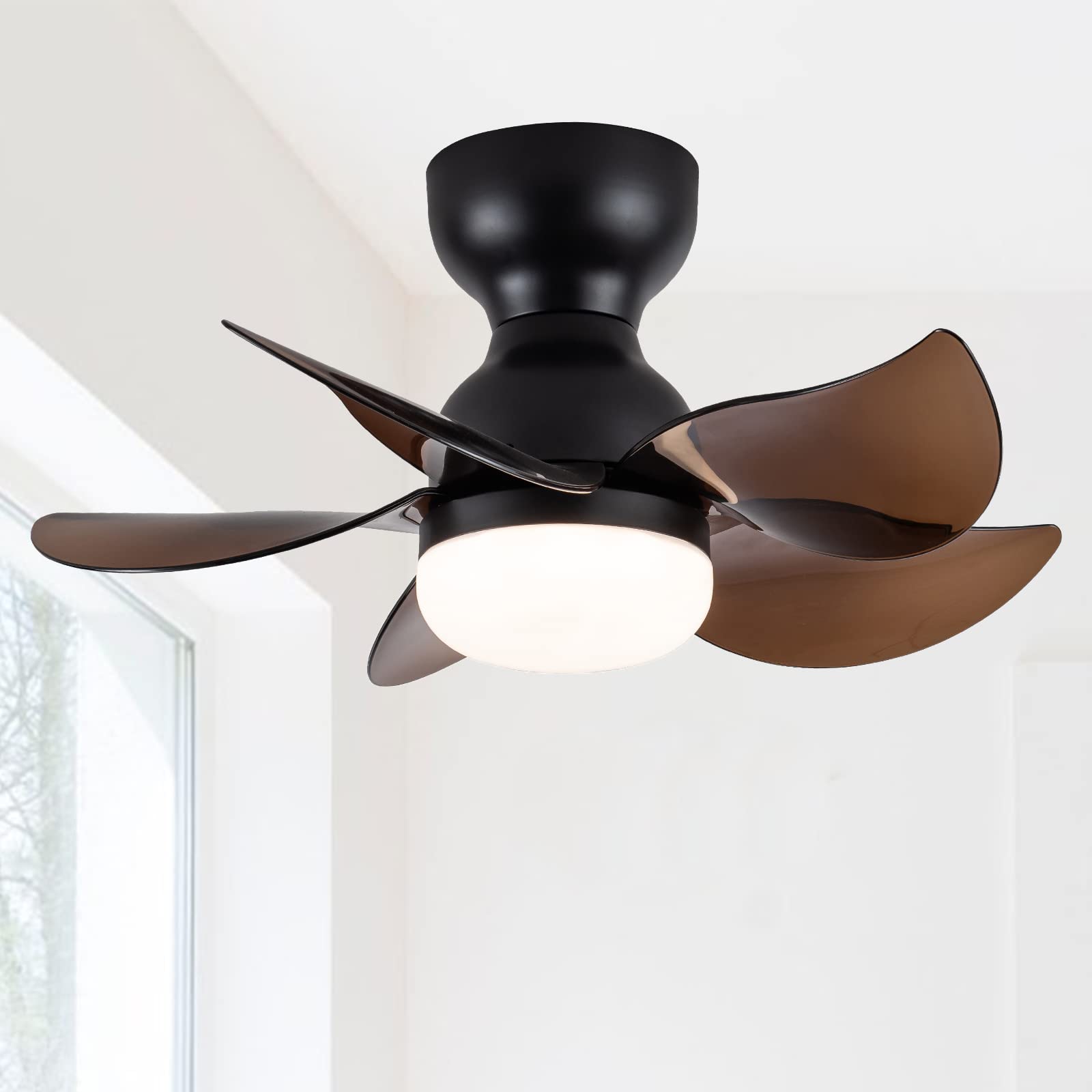
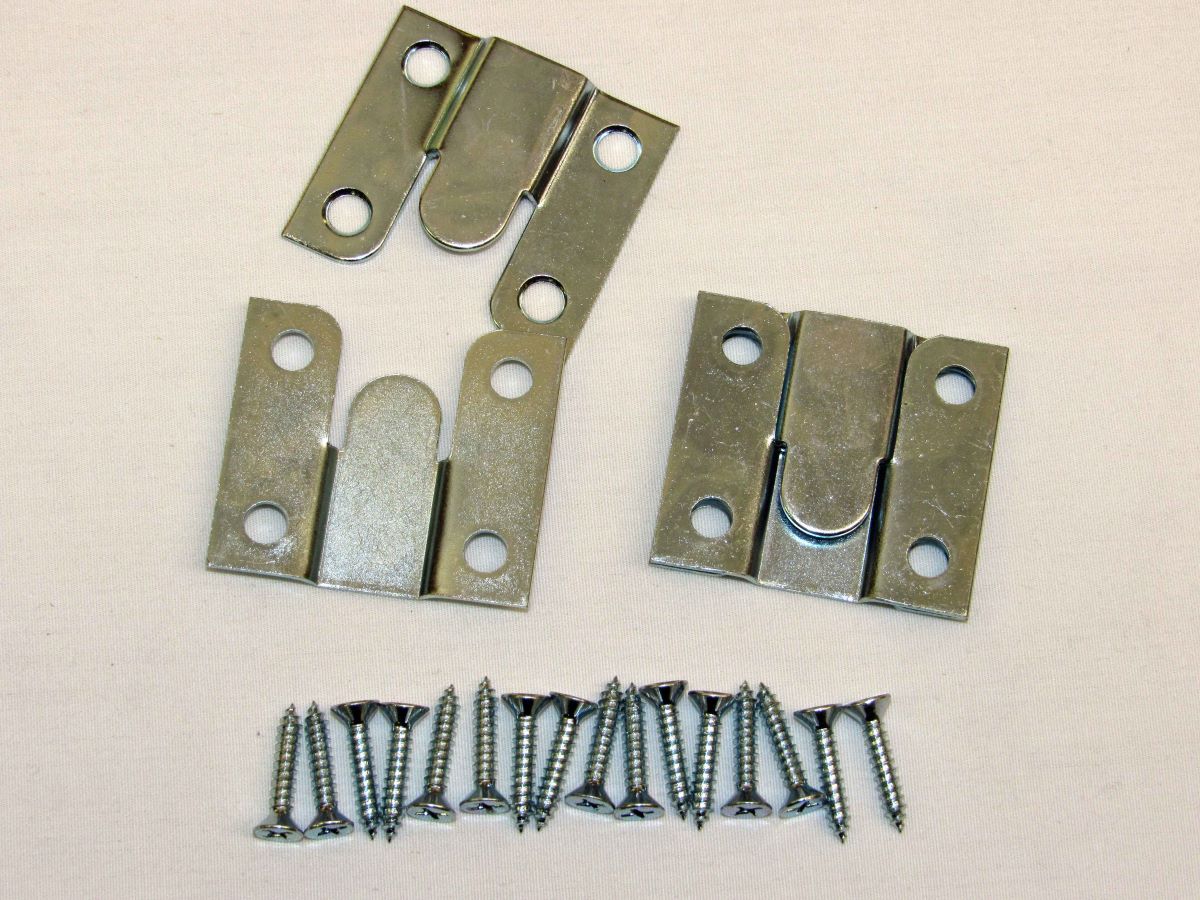

0 thoughts on “What Is Flush Mount Sink”